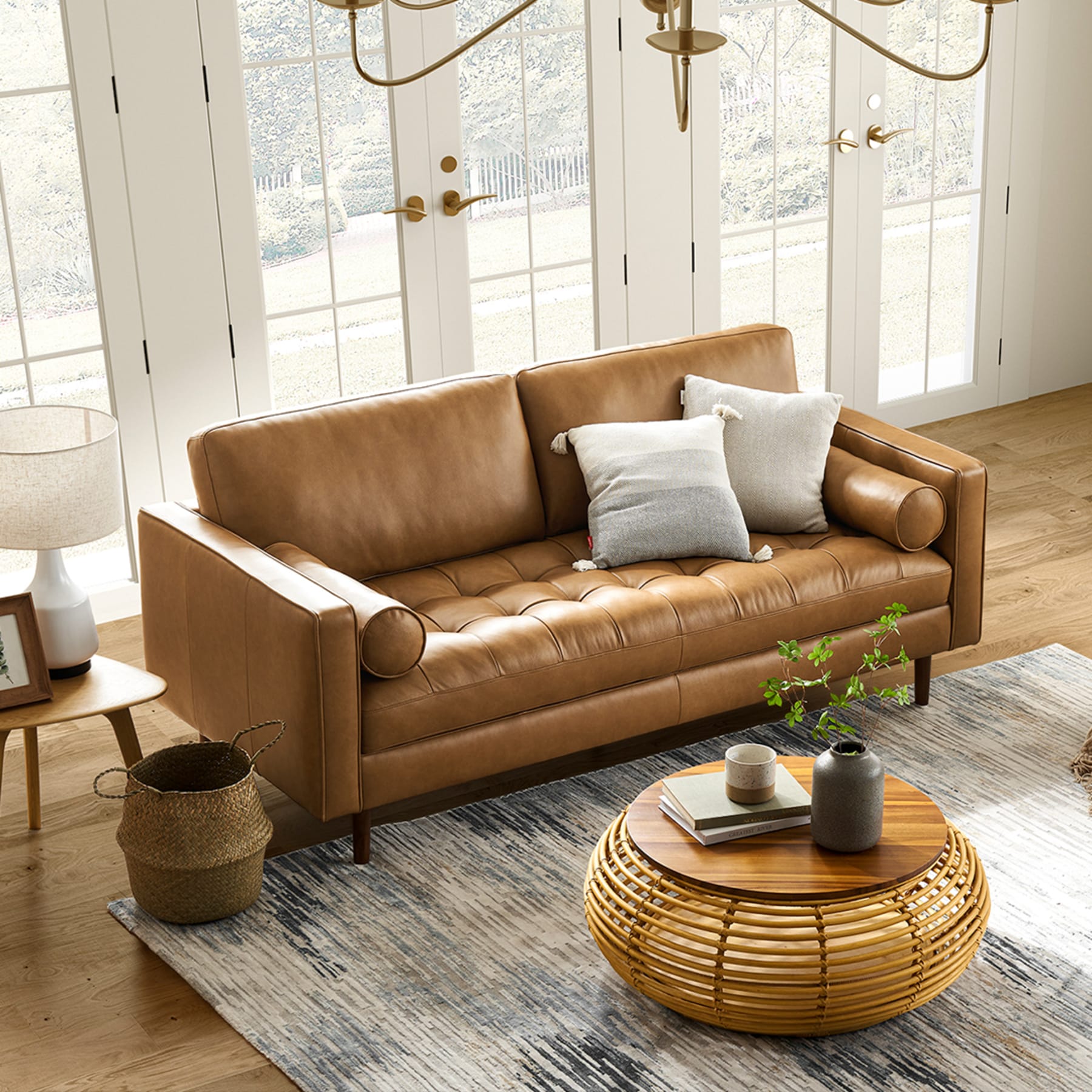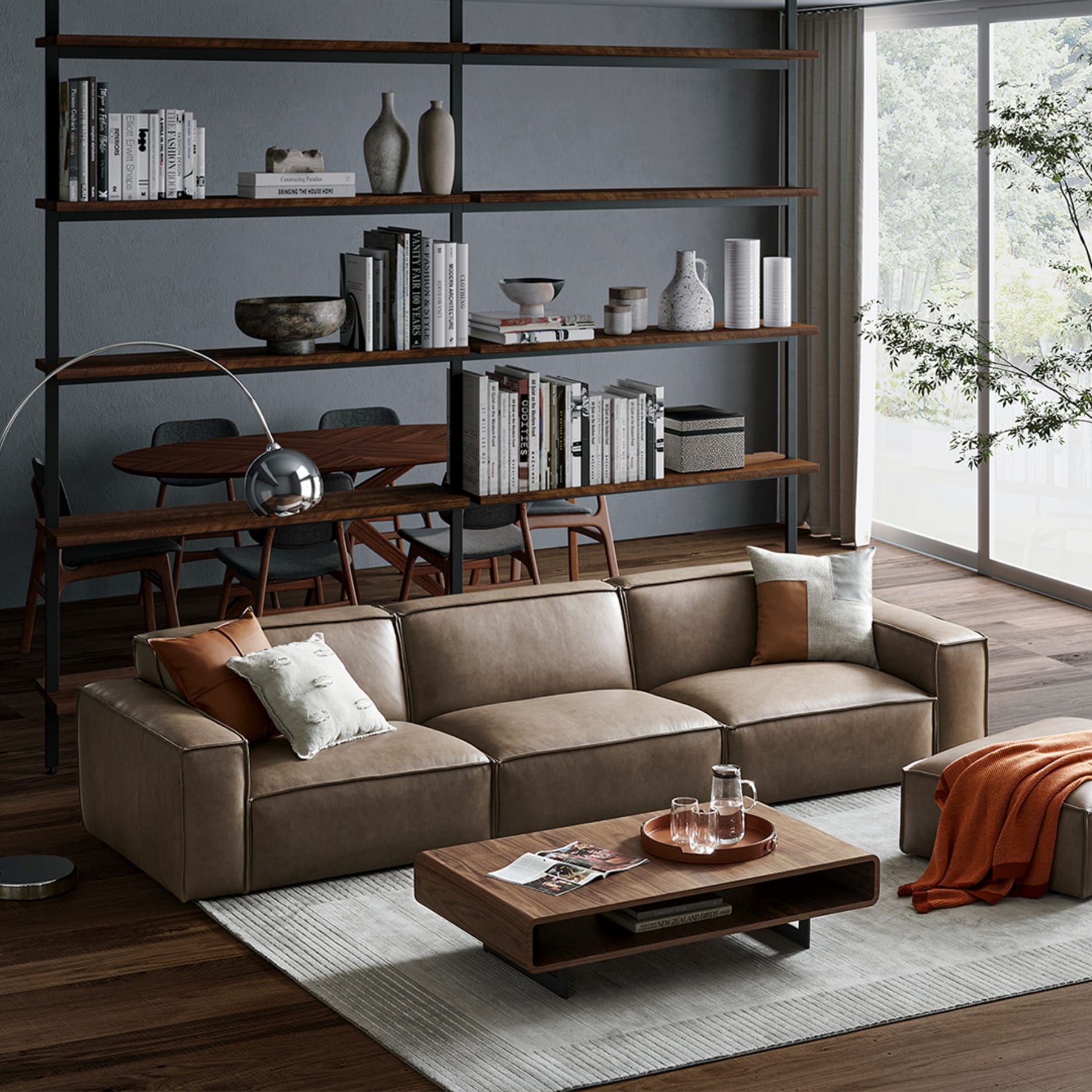
What are the Disadvantages of Faux Leather Furniture?
Timeless and indulgent, leather is one of those fantastic materials that look good in all types of interiors. If you enjoy the luxurious, buttery-soft look and feel of leather, there’s no time like the present to invest in a leather sofa or armchair for your home.
For those working on a tighter budget, faux leather is an affordable option that has become increasingly popular for home furnishing. However, while it might appear like the real deal at first glance, the material is fundamentally different from its natural counterpart. So, if you’re expecting your faux leather sofa to wear, age, and polish up in the same way as real leather, you may be disappointed.
Making the choice between faux and real leather isn’t always easy. But don’t despair, we’re here to share the differences between the two types of leather upholstery. Finding the right furnishing that’s perfect for you is about to become an absolute breeze.
Breathability
One of the greatest advantages of a real leather sofa is its breathability. This means comfort throughout the year, even on the warmest days. In comparison, because faux leather is a synthetic material, it is not breathable & may feel uncomfortably warm in hot weather. If temperatures rise too high, it could turn your living room into a no-go zone, especially on warm afternoons.
Opting for a genuine leather sofa would ensure your seating area remains cool and comfortable.
If you don’t have your heart set on leather, fabric and velvet armchairs and sofas are also great for people looking for breathable and comfortable furnishing. Cooling all year round, these classic finishes are perfect for our local humid climate.

Pictured: a classic mid-century stunner like Madison Leather 3-Seater Sofa has an open-based profile for easy cleaning.
Hypoallergenic
Another huge advantage of real leather is that it is hypoallergenic. Its smooth surface doesn’t trap dust, dirt, or pet hair and is very easy to clean, allowing you to remove any particles that may cause an allergic reaction.
Faux leather, on the other hand, is not hypoallergenic. Like fabric sofas, faux leather furnishings can collect harmful substances and make life less comfortable for anyone living with allergies. Although faux leather is probably easier to clean than some other types of upholstery, it may still add to the level of potential allergens in your home. So, if you live with someone who suffers from allergies, or who lives with a condition like asthma, faux leather may not be the best option.
What’s more, because faux leather is made from PVC, it can release toxic chemicals into the air. These potentially harmful compounds can aggravate some allergies and cause long-term health issues. If you’re looking for furniture that will reduce allergens in your home and help to create a healthy space, faux leather furnishings should be avoided.
If you want to reduce the chances of an allergic reaction even further, choose a leather chaise or sectional sofa that’s raised off of the ground. Having an open-base silhouette makes it easier to clean beneath the furnishing and remove hair, dust, and other particles that may be lurking on the floor.
Durability
One of the key factors in purchasing a sofa is its durability. If you’re looking for an investment piece that allows you to enjoy your leather sofa for years to time, real leather is the way to go.
Faux leather is much less durable than real leather. It tends to crack and peel over time, with poor quality pieces losing their original finish in just a few months. Because faux leather is manmade, this peeling and cracking can’t be undone, and your sofa will continue to degrade over time.

Pictured: the Jonathan Leather Extended Sofa is made of top-grain leather. This family-friendly piece is also coated to provide greater resistance to stains and wears.
Real leather on the other hand is incredibly durable. If it’s looked after correctly, real leather can last for decades, or even centuries. This makes real leather furniture a fantastic investment, allowing you to enjoy your leather armchairs or leather chaise sofa throughout the time. In the event that your leather furnishings are beginning to look a little tired or worn, a specialist leather treatment can revive them instantly, giving your interior a whole new look and your sofa and chairs a new lease of life.
For a lot of people, leather is even more beautiful when it’s a little worn. The material ages naturally, giving your sofa a unique look and helping it to ‘bed in’ to your living room. Because older leather is still incredibly strong – especially when properly cared for - these worn patches are unlikely to tear, allowing you to enjoy the natural evolution of the material without fear your furnishing will suffer.
If you want a sofa that’s durable, hardwearing, stylish, and comfortable, it’s well worth investing in real leather furnishing. Good for households with animals and young children, leather is a versatile material that’s ideal for modern life.
FAQs
Is faux leather hot to sit on?
Faux leather doesn’t breathe in the same way as real leather. As a result, it can start to feel hot when sat on for long periods of time or in warm weather. If you want a sofa that’s going to be comfortable all year round, choose a piece that’s made from real leather.
Does faux leather fall apart?
Faux leather is much less durable than real leather. If it’s not properly cared for, or if you have pets or young children, you may find that the material begins to degrade after a while. In some cases, the faux leather can start to tear and fall apart, leaving you with a sofa that looks scruffy and old before its time.
Is faux leather good for dogs?
Because faux leather tears more easily than real leather, it’s not a great option for households with dogs. If your dogs like to scratch and claw at the sofa, they could do some real damage to the surface in a very short period.